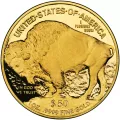Banks have been around for a very long time and continue to play an important role in our society today. But how did banks begin and where did they come from? How have they evolved into what they are today? The history of banking is a rich subject with many different angles and intriguing developments. In this article, we explore the history of banking by looking at its origins, key players, and most important events.
Origins of Banking
Banking got its start as a way for businesses to store their excess inventory and money. In exchange for their goods, people were paid an interest rate. By lending money, individuals could also generate interest income. Banks were not just storage facilities for money. They were a place to store and exchange coins, keep business accounts, and even write and exchange checks. As civilization progressed, banking became more sophisticated. First, the use of gold and silver for storing value became more widespread. Next, the invention of paper money made banking more convenient and efficient.
The Development of Banking in Ancient Civilizations
Ancient civilizations such as China and Egypt had rudimentary banking systems. In China, businesses and individuals would store their money in government-regulated temples. They would use government-issued paper money as early as the 10th century B.C. The system was not very sophisticated, however, and its use was limited to the Chinese. In Egypt, business transactions were recorded in government-regulated temples. It was common for people to use clay tablets as an early type of check to buy and sell goods. The tablets were imprinted with a seal and could be broken into pieces so that they could not be reused. This was the earliest form of banking in Egypt. However, it was only available to the wealthy. Later, the Romans had a sophisticated banking system. The banks were privately owned and regulated by the government. They used gold and silver coins as a store of value, and they had a sophisticated system of credit and interest payment.
The Renaissance and the Birth of Modern Banking
Banking was kicked into overdrive during the Renaissance era as Europe underwent several key transformations. The discovery of the New World led to a dramatic increase in trade and the circulation of capital. The invention of the printing press meant that more people were able to read and write, which helped form a more sophisticated financial system. Finally, the Scientific Revolution and the Age of Enlightenment led to an increase in knowledge and human progress. All of these factors helped to usher in a new era of banking. Many Italian merchants were granted permission from the pope to deposit money in church-owned banks and earn interest as a reward for helping to fund the Crusades. This allowed banking to become a key part of the economy and accessible to a wider range of people. The earliest known banknote is from the Bank of Venice and dates back to around 1000 A.D. During the Renaissance, banknotes became a popular substitute for coins. They were much easier to transport and store, and they were not as susceptible to damage.
The 18th Century: A Decade of Change
During the 18th century, banking underwent significant changes that would set the stage for the future. The Industrial Revolution introduced new technology and ways of producing goods. Britain’s empire expanded as colonies across the globe needed financial support. These new colonies helped to spread British banking around the world. These combined changes forced banks to adapt to survive. The Industrial Revolution caused a significant shift in the world’s economy. Countries transformed from agrarian societies to more industrialized ones. This led to a change in the way goods were produced, and new forms of paper money were created to regulate the economy. Banks found new ways to profit from these changes, such as issuing loans and ensuring payments.
19th Century: The Age of Revolution
The 19th century was a time of great upheaval in the world. It was also a time of dramatic change for banks. New inventions, political changes, and economic expansions all affected the banking industry. The invention of the telegraph made communicating with overseas banks much easier and sped up the process of international banking. This is an example of how new technologies were changing the world. The French Revolution and the Industrial Revolution forced banks to adapt to new environments. The French Revolution led British banks to move their headquarters from London to a more secure location, such as Edinburgh. This was the first major change in banking caused by the war. This period was also the beginning of an economic boom throughout the world. Trade expanded rapidly as the British Empire expanded across the globe.
20th Century: Depression, Recovery, and Growth
As the 20th century progressed, banks continued to change. The First World War and Great Depression had a significant impact on banking and led to new ways of doing business. The invention of new financial technologies, such as computers and credit cards, also helped shape the banking industry. During the First World War, banks changed their business model to accommodate the needs of the economy. They stopped issuing loans, and they stopped accepting coins and other forms of payment. Banks instead relied on customers to deposit their money so that it could be used in the economy. During the Great Depression, banks were forced to adapt once more. They reduced their interest rates and stopped making loans. They also relied more heavily on government regulations. During the latter half of the 20th century, banking was revolutionized by new technological advances. The invention of computers made managing money more efficient and easier. Credit cards and debit cards also became more common. These changes allowed banks to reach a wider audience and expand their services.
21st Century: New Technologies and Electronic Banking
The 21st century saw even more changes for banks. New technologies, such as smartphones and the internet, allowed for greater efficiency and easier access to banking services. New regulations and policies also helped to reshape the industry. The September 11 attacks led to a change in the way banks worked. Banks had to ensure that they were compliant with new regulations and policies. This led to a new industry standard that is still in place today. The Great Recession also had a significant impact on banking as a whole. It caused banks to change their policies and adapt to new economic conditions. Banks also started to rely more heavily on new technologies such as electronic banking.
Conclusion
The history of banking is a fascinating subject and one that is full of changes and dramatic events. Banking was first established as a way for merchants to store their excess inventory and money. Soon after, the use of gold and silver coins became more common. The invention of paper money allowed banking to become more efficient. Next, the Industrial Revolution helped to kick banking into overdrive. Finally, new technologies and the economic recession of the 21st century changed banking yet again. Banking has played a key role in civilization for millennia. It has helped people transfer money and store it in a safe place. It has also helped them earn a return on their savings. As the world has changed, so too has the banking industry. These changes have helped it to evolve and become more sophisticated.


 How do Beginners Sell on Etsy?
How do Beginners Sell on Etsy? Types of Freelance Writing Work
Types of Freelance Writing Work
 The Shenzhen Stock Exchange in China
The Shenzhen Stock Exchange in China The History of Medici Bank
The History of Medici Bank The First Bank of the United States
The First Bank of the United States Monte Dei Paschi di Siena is the Worlds Oldest Bank
Monte Dei Paschi di Siena is the Worlds Oldest Bank Banking in the Roman Empire
Banking in the Roman Empire